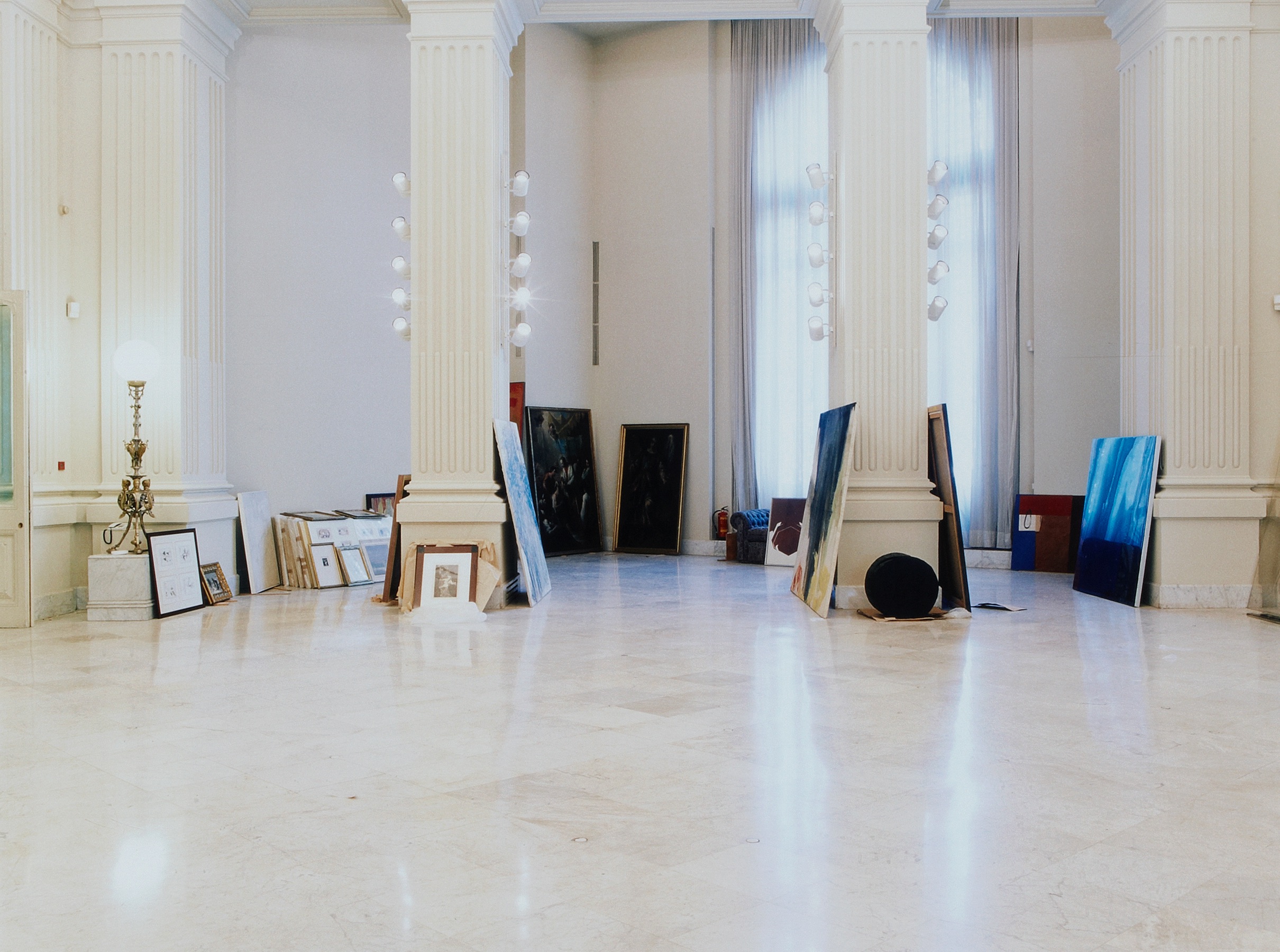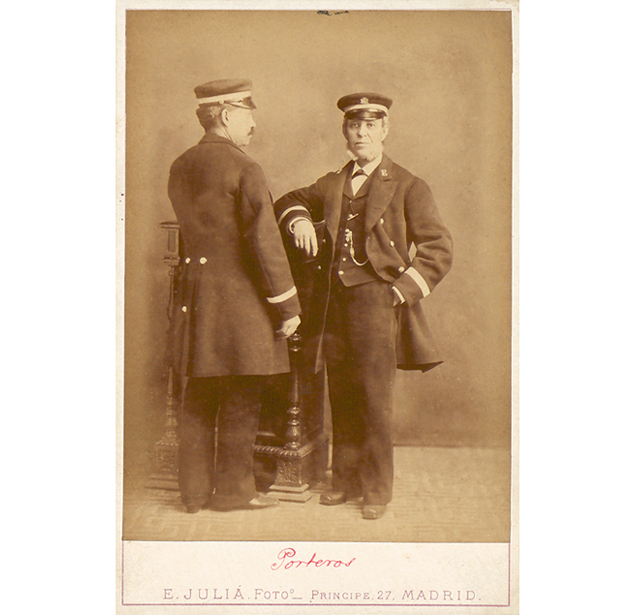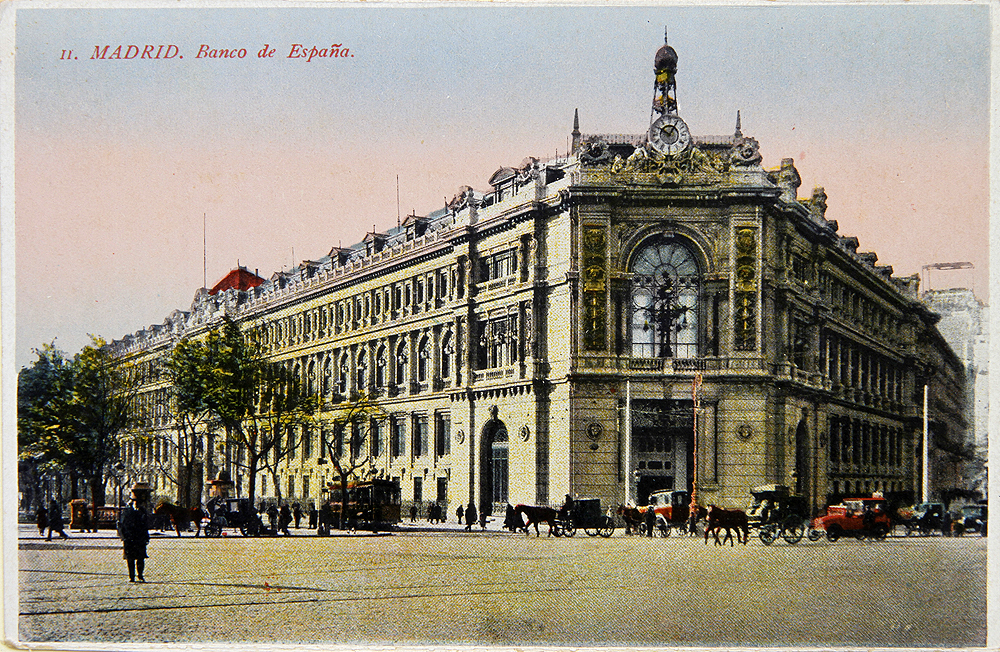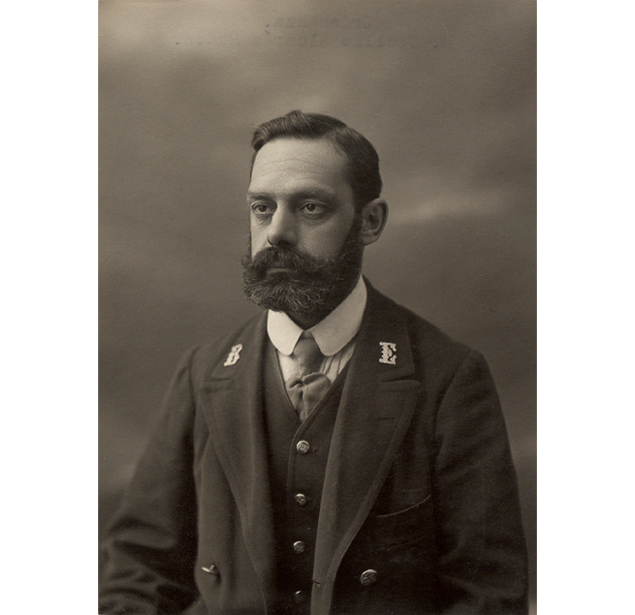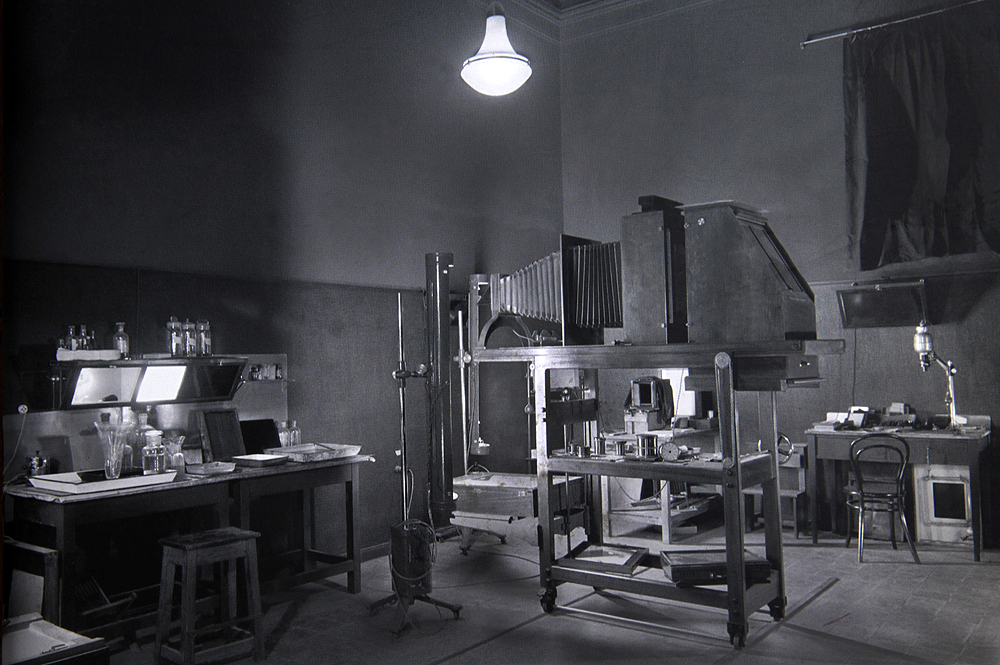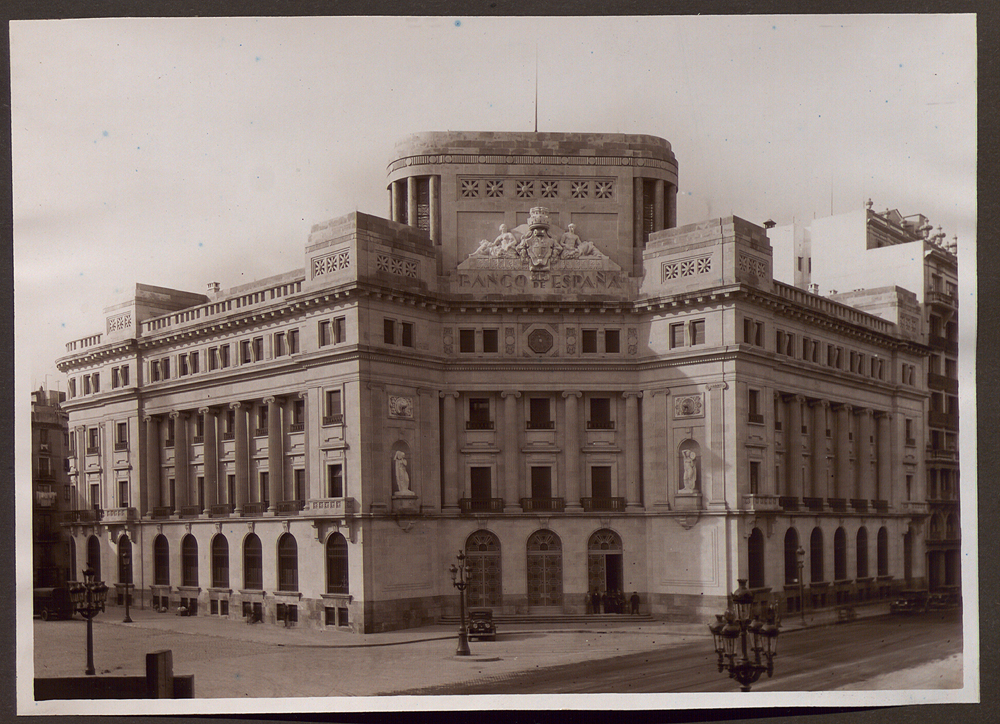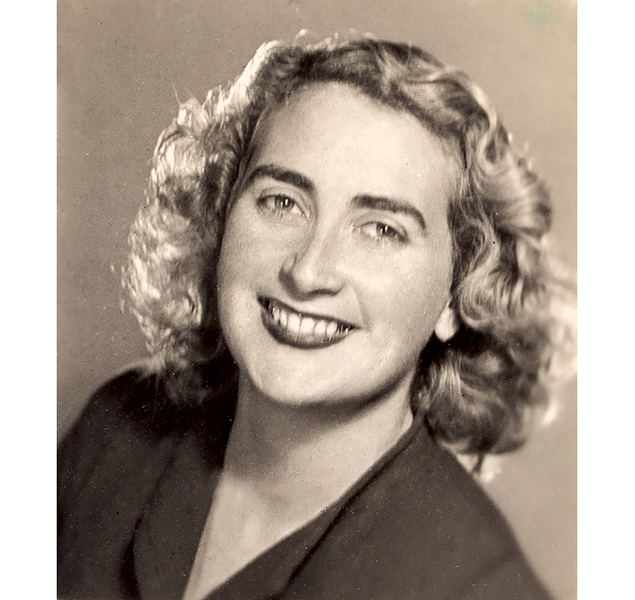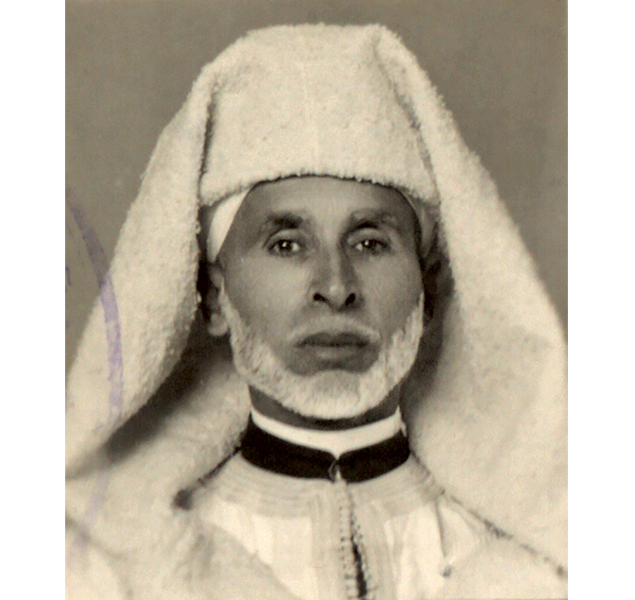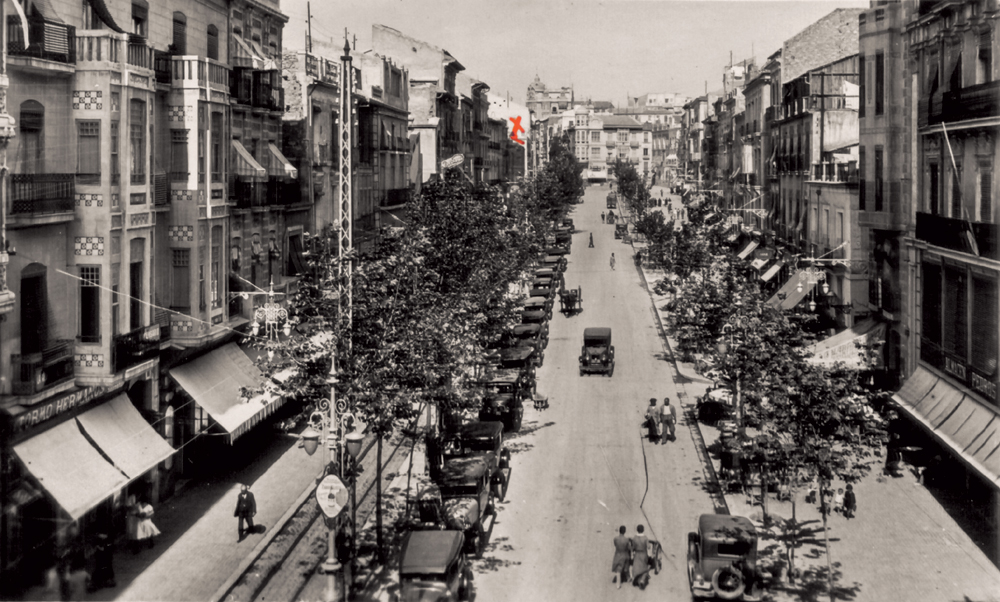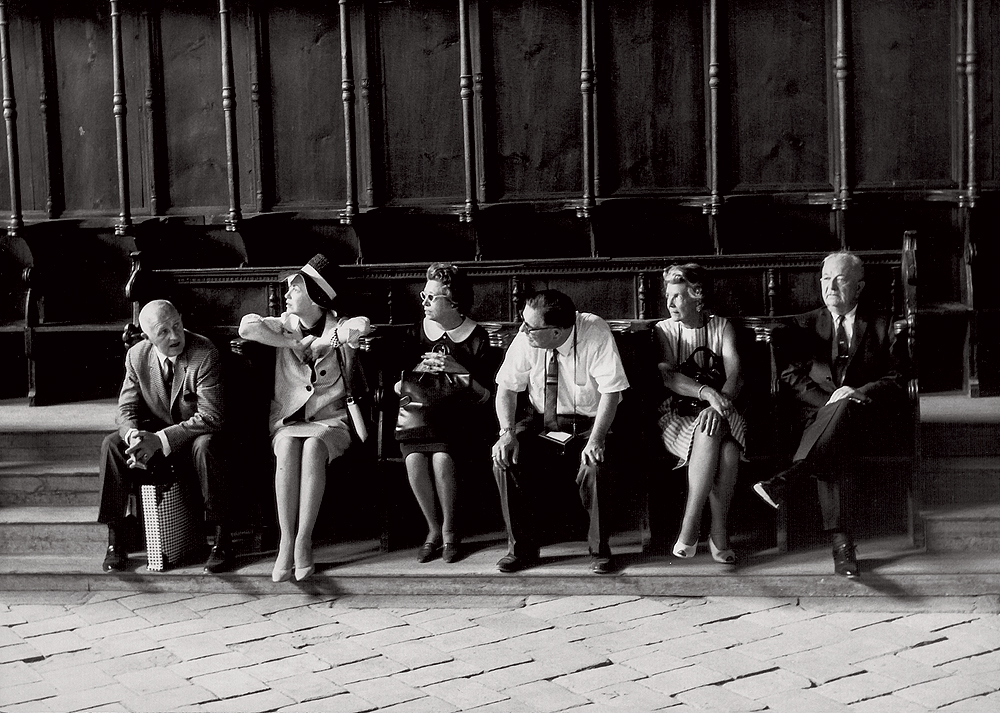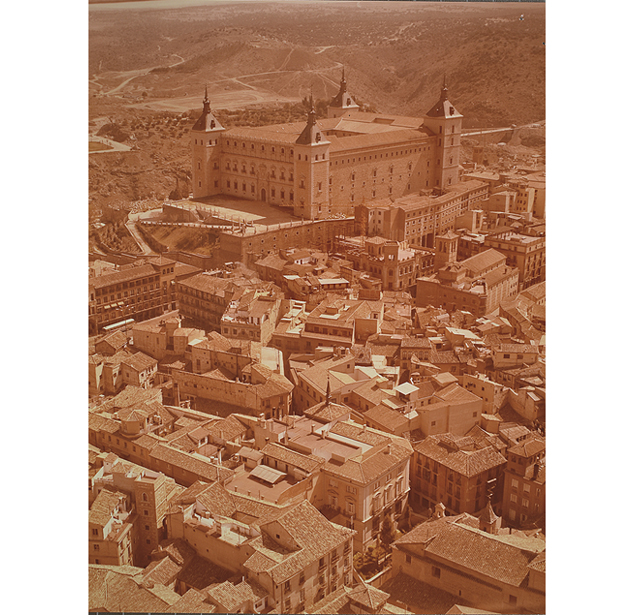PHOTOGRAPHIC ARCHIVE. BANCO DE ESPAÑA. FROM ALBUMEN TO PIXEL
The Banco de España's archives host a remarkable collection of photographs depicting the institution's internal history from the final quarter of the nineteenth century down to the present day. This new exhibition has two aims: to highlight the archive's function in safeguarding our historical memory and to display the contents of its collections, as part of its commitment to showcase this rich historical heritage.
The show explores the essential values of photography, in terms of the both the content and the container, the message and its medium, which together form the document. Any photograph is a residue of the past and, by extension, an essential source for historical study.
The exhibition is divided into five sections, in chronological order: Yellow Time (19th century), The Photograph as Document (1900-1925), From the Silver Age to the Transition (1925-1975), Spain is Different (1975-2023) and Towards Artificial Intelligence (21st century). It features three distinct approaches: the portrait as an identifying element, the spaces of the bank and the institution's activities. Together, these three types of photographs enable us to make a series of social interpretations and re-interpretations of issues such as urban planning, architecture, public works, people and customs. The show provides a different way of looking and seeing, of going from the contemplation of the particular to the universal.
'Life passes, but the image remains'. Santiago Ramón y Cajal
![]()
Bilbao. Banco de España. Gran Vía de Don Diego López de Haro. Trading Floor. 1923. Gelatin silver.
YELLOW TIME (NINETEENTH CENTURY)
'The fragment of reality represents the perpetuation of memory' (Boris Kossoy)
Beyond memory
Inspired by the old sepia-toned photographs (albumen prints) that largely superseded engravings and romantic prints, Miguel Hernández penned The Unending Lightning, containing the following verse: 'One day time will turn yellow on my photograph'. That yellow time is shown in a selection of nineteenth-century originals from the Banco de España Archive: Leopoldo Rovira's Gallery of Representatives of the Nation (1869); streetscapes of Alicante, Barcelona, Leon, Linares and Malaga; Eusebio Juliá's portraits of bank employees in their official uniform (ca. 1874) and a remarkable series taken to mark the opening of the Banco de España's new head offices in Madrid (1891) by the studio of Juana Roig, Jean Laurent's successor. Together, these pictures confirm the documentary significance of the photograph. There are also a number of 'stereographs', offering hyper-realistic 3D views of the world.
![]()
Banco de España clerk and porter. Ca. 1874. Photograph: Eusebio Juliá. Cabinet card. Albumen paper | Portrait of Francisco Serrano Domínguez. 1869. Photograph: Leopoldo Rovira. Albumen paper.
THE PHOTOGRAPH AS DOCUMENT (1900-1925)
'As long as the photograph survives, they will live on' (Julio Llamazares)
Portraits and Postcards
From the end of the nineteenth century onwards, all sites offered for Banco de España offices were carefully photographed. The new buildings became mirrors of their respective cities, among them Oviedo, Valencia, Badajoz, Bilbao and Vitoria. The showpiece was the bank’s central offices on the Plaza de Cibeles in Madrid, a symbol of fin-de-siècle change; pictures of the building were reproduced in the press and on millions of postcards printed in the first decade of the twentieth century, endowing it with a cultural significance that went beyond the purely geographical ambit.
It was during this period, too, that the bank began to take portrait photographs of its staff to attach to their employment files. Other formats followed in a variety of styles, including the so-called Bertillon system (the front and profile 'mug-shot' used by French police). Examples from the two sets are displayed in the exhibition, the first taken by the Bank's official photographer, José Irigoyen, around 1906, and the second by a range of different studios and photographers.
![]()
Bartolomé Maura Montaner, engraver at the banknote printhouse. 1905-1907. Photograph: José Irigoyen Zabaleta. Gelatin silver | Engracia Herranz Esteban, toilet attendant. 1905-1907. Photograph: José Irigoyen Zabaleta. Gelatin silver.
FROM THE SILVER AGE TO THE TRANSITION (1925-1975)
'Life passes, but the image remains’ (Santiago Ramón y Cajal)
Spaces, architectures, views
The period encompassing the first third of the twentieth century might be regarded as the golden age of photography, marked as it was by three major developments: technical advances, the consolidation of the role of photojournalism and the social impact of the illustrated press. These changes are reflected in the Banco de España's collection, at a time when the bank was becoming a socio-cultural icon and a hallmark of identity. In cities throughout the country, the bank's buildings and other premises became points of reference, featuring in photographic collections such as Puig Farran's album of Barcelona (1932). The photographs taken by some of the country's best studios for the bank's staff files also constitute valuable portraits that can be analysed from a sociological perspective. Together, these pictures reflect the splendour of the period, as captured by artists and reporters — amongst them the legendary Alfonso, whose camera can be seen in the exhibition alongside an iconic photograph of the bank.
![]()
Almeria. Banco de España. Plaza Circular. Ca. 1929. Photograph: Antonio Mateos Hernández. Gelatin silver.
![]()
Banco de España. General Meeting of Shareholders. 1934. Photograph: Cristóbal Portillo Robles. Gelatin silver.
Time of Silence
During the Civil War, several Banco de España buildings were either destroyed or seriously damaged and later had to be rebuilt. One example was the Teruel branch, and the exhibition includes an illustrated report, together with pictures of the ruins taken by the Marquis of Santa María del Villar.
The staff identity pictures, taken in studios by leading photographers such as Amer, Savignac and Torres Molina, mirror the society of the time with its gestures, poses and garments. In the laboratory at the bank's head offices, negatives were developed and copies printed showing the institution's activities.
In 1956 a new office was opened in Barcelona, for which Carlos Pérez de Rozas took a series of photographs. Another album from 1958 features the bank's contribution to the work of social recovery, when it made a charitable donation to build housing for poorer families. These pictures help to preserve the memory of what is sometimes called the 'time of silence'.
![]()
Teresa Yuste y Valdés, temporary auxiliary worker from Madrid. 1939. Photograph: Amer. Gelatin silver | Barcelona. Banco de España. Plaza de Cataluña. 10 October 1955. Photograph: Carlos Pérez de Rozas. Gelatin silver.
Images of Change
By the mid-1960s, colour was beginning to find its way into photography. Something similar was happening to the grey everyday life of post-war Spain; the 1959 Stabilization Plan brought an end to the country's long economic isolation and ushered in a period of economic recovery. Spain joined the International Monetary Fund and began to liberalise its financial system. This new openness to the outside world was reflected in May 1966 when the American Bankers Association held its Thirteenth International Monetary Conference in Spain, with a series of activities in Madrid, Toledo and Granada. The development of tourism, too, put the bank back on postcards. Architects Juan de Zavala Lafora and Javier Yárnoz Orcoyen designed an extension to the Madrid head offices on the corner of Calle de los Madrazo and Calle Marqués de Cubas. The new building was erected between 1969 and 1976 on the site formerly occupied by the newspapers El Liberal and Heraldo de Madrid, the Afrodisio Aguado bookshop and the Gong Cinema, closed in 1965, where well-known writer and columnist Azorín had spent the last years of his life enjoying American movies.
![]()
Thirteenth Monetary Conference of the American Bankers Association held in Spain. Arrival at Armilla Airport, Granada. May 1966. Photograph: Manuel Aumente. Gelatin silver | Gong Cinema. Calle del Marqués de Cubas, No. 11. Ca. 1965. Photograph: EFE.
SPAIN IS DIFFERENT (1975-2023)
'Photography is an act of love' (Alberto Schommer)
The World in Colour
In the intense period since Spain's return to democracy, the Banco de España has performed innumerable activities, overseen by leading figures from the highest national and international bodies. It has also reinforced its infrastructure with some unique architectural works. In 1978, tenders were invited for closing off the bank's building in the area of Calle Alcalá. The winning submission was by Rafael Moneo (who finally completed the work in 2006). In 1982 the bank celebrated its two hundredth anniversary. In photography, the period saw a move from black-and-white to colour, and the democratisation of the art with the increased availability of easy-to-use cameras. The Banco de España became a symbol of Madrid, featuring in some landmark publications, including two selected for the exhibition: El Banco de España. Una visita a la planta noble del edificio de Madrid and El Viaje, by Alberto Schommer.
![]()
Madrid. Banco de España. Competition for designs for the building on Calle Alcalá and Calle Marqués de Cubas. Submission by Rafael Moneo Vallés. 1979. Photograph: Altair Photo (Madrid). Chromogenic print.
![]()
Opening of the Banco de Mexico's Numismatics exhibition in Madrid. 1978. Photograph: Europa Press. Gelatin silver.
TOWARDS ARTIFICIAL INTELLIGENCE (TWENTY-FIRST CENTURY)
'The world seems to exist to be photographed' (Antonio Muñoz Molina)
From the Photo Library of Babel to AI
The collections of pictures in the bank's archives reflect technological developments in photography. Since the end of the twentieth century, this has involved a move to the digital universe and more recently, the increasing use of artificial intelligence. The essential work of any archive in safeguarding our memories extends to fields such as visual culture, visibility and dissemination. For reference purposes, the exhibition includes a set of pictures from the archives of several Banco de España branch offices and two digital photographs taken especially for the occasion in the offices of the historical archive, showing the research room and the storage area. In a homage to classic techniques, two photogravures have been made using modern technology, reflecting the past and present of photography and its applications. There is also an iconic picture symbolising the role of women in twenty-first century Spain.
![]()
Vigo. Banco de España. Rua do Areal. Archive. 1929. Photograph: Enrique Sarabia González.
![]()
Madrid. Banco de España. Repository of the Historical Archive. 2024. Photograph: Ana Amado. Digital image.
